We created this article to help you with the removal of the unwanted BrowserActivity app for Mac. You could use this removal guide and stay safe.
What Is BrowserActivity Mac Virus?
BrowserActivity is in fact a potentially unwanted program from the AdLoad malware family. Once installed on a Mac, it generates the following message:
BrowserActivityfld will damage your computer.
As such it is programmed to affect popular web browsers installed on Mac operating systems. Oftentimes, the app is referred to a Mac virus by users with affected systems. The good news is browser hijackers like BrowserActivity do not act in a malicious way. The primary goal is to generate revenue for their developers.
Since PUPs are distributed by shady means like software packages, malicious advertising, and hacked websites, you might have missed the moment this app got installed on your Mac. Still, once the program runs on your Mac, it tries to replace the homepages of installed web browsers (Safari, Chrome, Firefox, etc.) with a hoax search engine.
Security experts highly recommend the complete removal of BrowserActivity from the affected macOS.
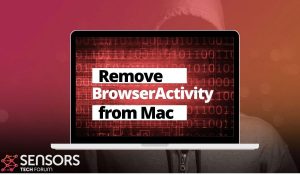
BrowserActivity Details
| Name | BrowserActivity a.k.a. Trojan.Adload |
| Type | Adware / Potentially Unwanted Application / Mac Virus |
| Removal Time | Less than 15 minutes |
| Removal Tool |
See If Your System Has Been Affected by malware
Malware Removal Tool
Malware Removal Tool
|
BrowserActivity on Mac – More Details
BrowserActivity is a potentially undesired app that has been spotted to infect Mac machines. Once installed, it generates the following pop-up message:
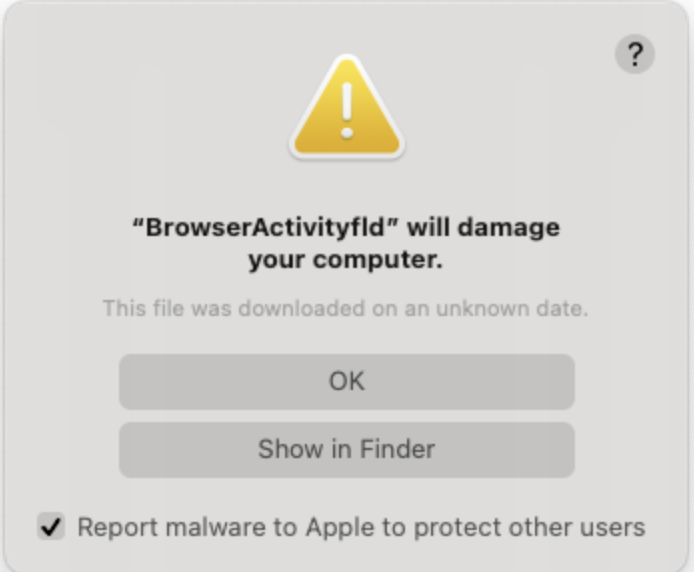
BrowserActivity alters main browser settings once it loads on a macOS. It could perform changes without displaying any notifications. Then it could force you to use the services of a hoax search engine. Affected by BrowserActivity hijacker could be the settings of the default search engine and homepage on almost all browsers installed on the infected macOS.
Happily, BrowserActivity Mac hijacker does not act maliciously. The program has the primary goal to monetize its presence on Mac devices it affects. Unlike, ransomware threats that extort ransom fees from victims, hijackers (SearchWebAid, Fireseerch.com, SearchWebMesh) monetize their presence by generating sponsored content.
Advertis that may pop up as a result of infection with BrowserActivity hijacker may be:
- Pop-ups.
- Browser redirects.
- Push notifications.
- Banners.
- Highlighted text ads.
- Ad-supported search results.
Is “BrowserActivityfld will damage your computer” Pop-up Dangerous?
All suspicious ads may expose your Mac at risk of malware infections. Sometimes, ads delivered by PUPs link to corrupted sites that host rogue apps, online scams, and malicious software. In the unfortunate event that you happen to visit such a page, you may end up as a victim of fraudsters or hackers.
Another issue that BrowserActivity could cause is unsolicited data collection. By doing this, BrowserActivity helps its owners to configure additional ad campaigns that match your online interests. Fraudsters hole that you will be more prone to visit sponsored results and click ads generated by their annoying program.
You have probably missed the moment when the unwanted BrowserActivity got installed on your Mac. This is one of the main reasons why apps like BrowserActivity are called potentially undesired programs. Typically, shady techniques like software bundling, corrupted freeware installers, fake software update notifications, various torrent files, and others are misused for the spread of PUP. All these techniques aim to trick you into installing unwanted programs without noticing the installation process.
For the sake of your online and macOS security, it’s best to consider the complete removal of this browser hijacker from Chrome, Safari and other affected browsers. A complete solution to the annoying redirecting issue is possible with the help of a thorough removal process. Don’t forget that there are some harmful files and entries created by the PUP that will keep altering browsing settings as long as they are present on the macOS.
How to Remove BrowserActivity from Mac
In order to remove BrowserActivity along with all entries it created on the Mac system, you should complete several removal steps in a precise order. The guide below presents manual and automatic removal approaches. In order to fully get rid of files installed by undesired programs and strengthen macOS security, we recommend that you combine the steps. The manual removal might be a quite complicated process that requires advanced computer skills. If you don’t feel comfortable with the manual steps, navigate to the automatic part of the guide.
Notice: Before manually removing files or folders on your Mac, make sure to identify the accurate components of BrowserActivity, because deleting other apps’ files or system settings files by mistake may trigger malfunction of installed apps or even your system.
Steps to Prepare Before Removal:
Before starting to follow the steps below, be advised that you should first do the following preparations:
- Backup your files in case the worst happens.
- Make sure to have a device with these instructions on standy.
- Arm yourself with patience.
- 1. Scan for Mac Malware
- 2. Uninstall Risky Apps
- 3. Clean Your Browsers
Step 1: Scan for and remove BrowserActivity files from your Mac
When you are facing problems on your Mac as a result of unwanted scripts and programs such as BrowserActivity, the recommended way of eliminating the threat is by using an anti-malware program. SpyHunter for Mac offers advanced security features along with other modules that will improve your Mac’s security and protect it in the future.
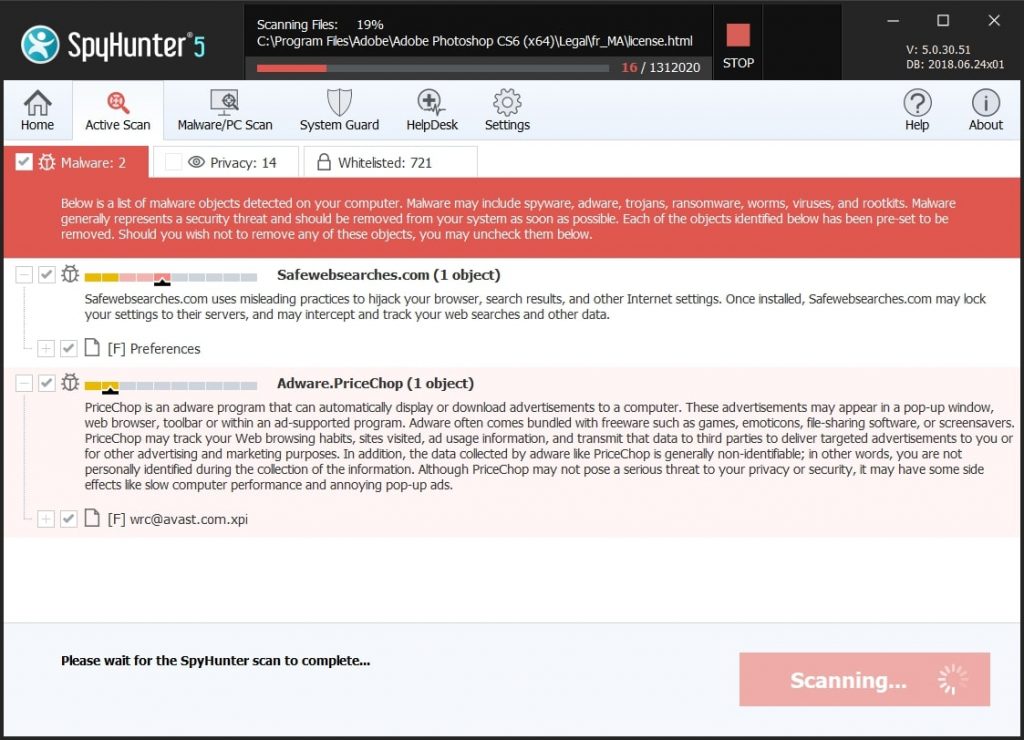
Quick and Easy Mac Malware Video Removal Guide
Bonus Step: How to Make Your Mac Run Faster?
Mac machines maintain probably the fastest operating system out there. Still, Macs do become slow and sluggish sometimes. The video guide below examines all of the possible problems that may lead to your Mac being slower than usual as well as all of the steps that can help you to speed up your Mac.
Step 2: Uninstall BrowserActivity and remove related files and objects
1. Hit the ⇧+⌘+U keys to open Utilities. Another way is to click on “Go” and then click “Utilities”, like the image below shows:

2. Find Activity Monitor and double-click it:

3. In the Activity Monitor look for any suspicious processes, belonging or related to BrowserActivity:


4. Click on the "Go" button again, but this time select Applications. Another way is with the ⇧+⌘+A buttons.
5. In the Applications menu, look for any suspicious app or an app with a name, similar or identical to BrowserActivity. If you find it, right-click on the app and select “Move to Trash”.

6. Select Accounts, after which click on the Login Items preference. Your Mac will then show you a list of items that start automatically when you log in. Look for any suspicious apps identical or similar to BrowserActivity. Check the app you want to stop from running automatically and then select on the Minus (“-“) icon to hide it.
7. Remove any leftover files that might be related to this threat manually by following the sub-steps below:
- Go to Finder.
- In the search bar type the name of the app that you want to remove.
- Above the search bar change the two drop down menus to “System Files” and “Are Included” so that you can see all of the files associated with the application you want to remove. Bear in mind that some of the files may not be related to the app so be very careful which files you delete.
- If all of the files are related, hold the ⌘+A buttons to select them and then drive them to “Trash”.
In case you cannot remove BrowserActivity via Step 1 above:
In case you cannot find the virus files and objects in your Applications or other places we have shown above, you can manually look for them in the Libraries of your Mac. But before doing this, please read the disclaimer below:
1. Click on "Go" and Then "Go to Folder" as shown underneath:

2. Type in "/Library/LauchAgents/" and click Ok:

3. Delete all of the virus files that have similar or the same name as BrowserActivity. If you believe there is no such file, do not delete anything.

You can repeat the same procedure with the following other Library directories:
→ ~/Library/LaunchAgents
/Library/LaunchDaemons
Tip: ~ is there on purpose, because it leads to more LaunchAgents.
Step 3: Remove BrowserActivity – related extensions from Safari / Chrome / Firefox







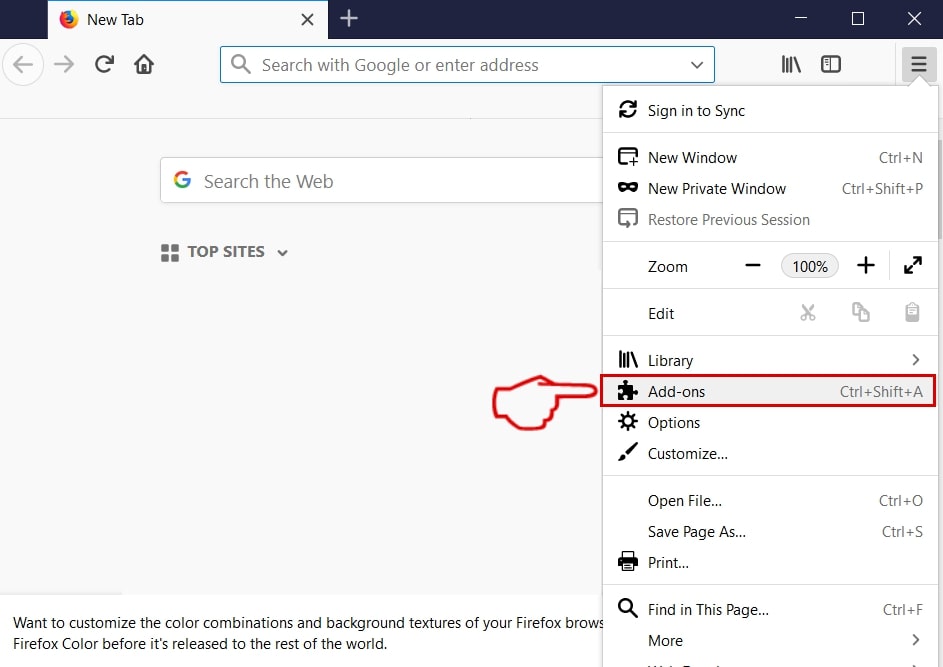
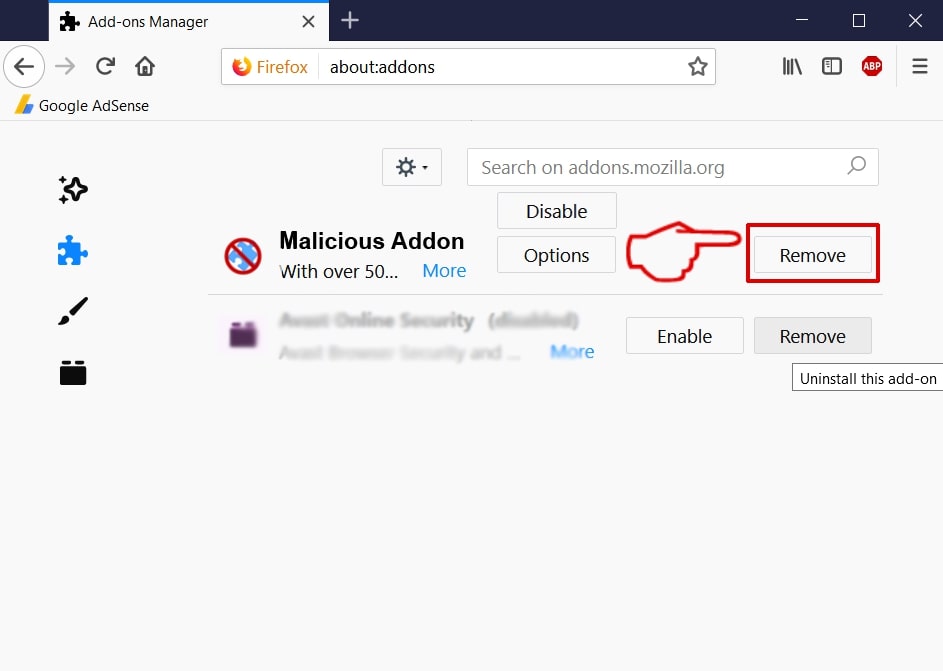
BrowserActivity-FAQ
What is BrowserActivity on your Mac?
The BrowserActivity threat is probably a potentially unwanted app. There is also a chance it could be related to Mac malware. If so, such apps tend to slow your Mac down significantly and display advertisements. They could also use cookies and other trackers to obtain browsing information from the installed web browsers on your Mac.
Can Macs Get Viruses?
Yes. As much as any other device, Apple computers do get malware. Apple devices may not be a frequent target by malware authors, but rest assured that almost all of the Apple devices can become infected with a threat.
What Types of Mac Threats Are There?
According to most malware researchers and cyber-security experts, the types of threats that can currently infect your Mac can be rogue antivirus programs, adware or hijackers (PUPs), Trojan horses, ransomware and crypto-miner malware.
What To Do If I Have a Mac Virus, Like BrowserActivity?
Do not panic! You can easily get rid of most Mac threats by firstly isolating them and then removing them. One recommended way to do that is by using a reputable malware removal software that can take care of the removal automatically for you.
There are many Mac anti-malware apps out there that you can choose from. SpyHunter for Mac is one of the reccomended Mac anti-malware apps, that can scan for free and detect any viruses. This saves time for manual removal that you would otherwise have to do.
How to Secure My Data from BrowserActivity?
With few simple actions. First and foremost, it is imperative that you follow these steps:
Step 1: Find a safe computer and connect it to another network, not the one that your Mac was infected in.
Step 2: Change all of your passwords, starting from your e-mail passwords.
Step 3: Enable two-factor authentication for protection of your important accounts.
Step 4: Call your bank to change your credit card details (secret code, etc.) if you have saved your credit card for online shopping or have done online activiites with your card.
Step 5: Make sure to call your ISP (Internet provider or carrier) and ask them to change your IP address.
Step 6: Change your Wi-Fi password.
Step 7: (Optional): Make sure to scan all of the devices connected to your network for viruses and repeat these steps for them if they are affected.
Step 8: Install anti-malware software with real-time protection on every device you have.
Step 9: Try not to download software from sites you know nothing about and stay away from low-reputation websites in general.
If you follow these reccomendations, your network and Apple devices will become significantly more safe against any threats or information invasive software and be virus free and protected in the future too.
More tips you can find on our MacOS Virus section, where you can also ask any questions and comment about your Mac problems.
About the BrowserActivity Research
The content we publish on SensorsTechForum.com, this BrowserActivity how-to removal guide included, is the outcome of extensive research, hard work and our team’s devotion to help you remove the specific macOS issue.
How did we conduct the research on BrowserActivity?
Please note that our research is based on an independent investigation. We are in contact with independent security researchers, thanks to which we receive daily updates on the latest malware definitions, including the various types of Mac threats, especially adware and potentially unwanted apps (PUAs).
Furthermore, the research behind the BrowserActivity threat is backed with VirusTotal.
To better understand the threat posed by Mac malware, please refer to the following articles which provide knowledgeable details.


